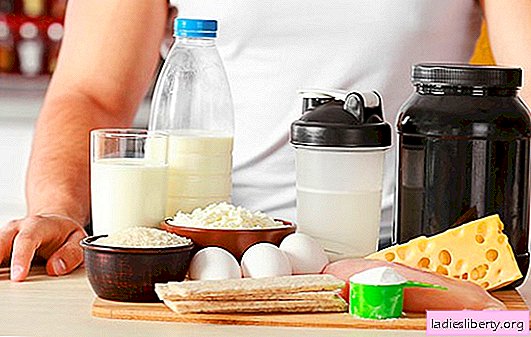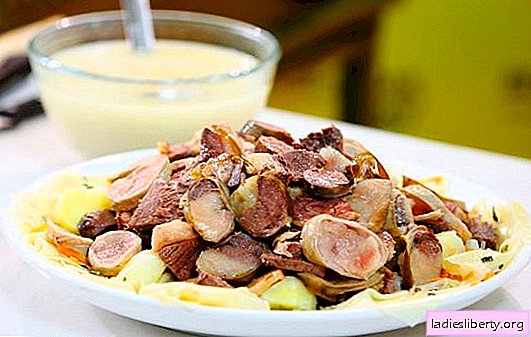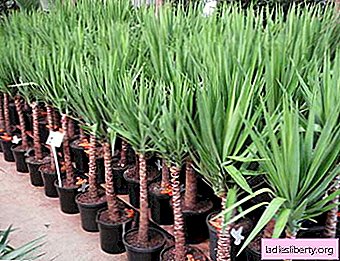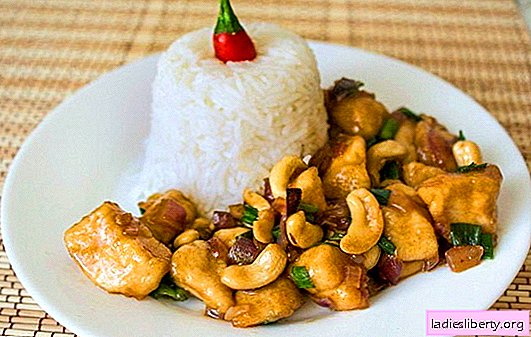
The cells of the human body are constantly updated, therefore, depend on the regular intake of protein. Some people believe that it is almost impossible to get nutrients from food, so they resort to "high protein" supplements. But are these trending products really beneficial?
Protein-rich foods - bloated trend
Be it bread, cereal or milk drinks: foods with an extra serving of protein have been in fashion for quite some time now. According to scientists, such products have achieved an average sales growth of more than 60% over the past 4 years.
Manufacturers are turning not only to customers focused on health and fitness, but also to the "masses." Because protein-rich foods quickly saturate and help build muscle. But is it?
According to experts, protein contributes to weight loss, because it decomposes more slowly and causes a feeling of satiety. Protein-rich foods reduce food cravings and speed up the use of fats.
Some proteins contain amino acids (tryptophan and tyrosine), which stimulate the release of substances that cause a feeling of fullness.
The Ministry of Health recommends that adult men and women consume 0.8 grams per kilogram of body weight daily. A person weighing 70 kilograms daily needs 56 grams of protein. For adults over 65, the Ministry of Health recommends 1 gram per kilogram of body weight.
Sometimes protein foods do more harm, and sometimes less protein.
Fitness experts generally recommend consuming more protein. Power athletes are often recommended to use from 1.3 to 1.8 grams per kilogram of body weight. In some cases, however, the amounts may be higher.
However, protein bars or special protein drinks are not needed. In most cases, natural protein is enough. The International Dietetic Association also states that the right amount of protein can be easily obtained with a normal balanced diet.
Experts selected several examples of high protein foods and described what they contained.
Protein Bread Contains More Calories
Most consumers notice protein bread at the bakery or supermarket. Flour in this case is replaced with vegetable protein obtained from wheat and legumes. Sometimes include animal protein.
According to the Ministry of Health, protein bread contains 22 g per 100 grams (about 2 slices) of protein. This is about 3 times more protein than classic whole grain bread.
However, the protein variant produces 9 to 13 grams of fat compared to regular whole grain bread. Not surprisingly, protein bread contains 20% more calories, depending on the variety.
Concentrated Nutrients
Even some meat and sausage producers now offer protein sausages made from smoked beef, pork or turkey meat. For such foods, protein-rich pieces of meat are smoked and dried. Therefore, all nutrients are “concentrated” due to water loss.
The protein content is about 40%, so protein supplements are not needed. Chips made from air-dried or freeze-dried meat are also relatively new to the market.
Protein foods can be high in sugar.
Skimmed milk powder, soy protein, or isolated proteins are usually not sold naturally. The latter are “extracted” from their original sources by chemical processes.
Added sugar, stabilizers and flavorings can also be used in cereals. Protein bars, which include milk, soy and whey protein, as well as cereals, often contain a lot of sugar.
Too much protein can be harmful
High amounts of protein can be unhealthy for some people. According to the Ministry of Health, increased protein intake in adolescents with impaired renal function impairs health.
According to experts, it is important that people whose protein intake significantly exceeds the need, pay special attention to the fluid. Reason: as a result of the decomposition of protein, urea is formed, which should be excreted in the urine.











